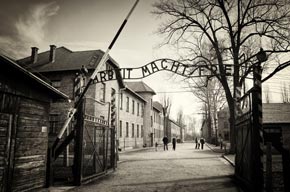
February 17, 2015

Source: Shutterstock
Not to be outdone, Jerzy Wróblewski, director of the Auschwitz State Museum, told the New Yorker in 1993 that he has “neither the time nor the resources to deal with all the issues” I raised regarding authenticity.
For good measure, I should add all the times that respected Holocaust professionals admitted to me (when they knew me as Stein) that the “gas chamber” at Dachau was a fake, built for show by the U.S. Army after liberation.
None of the fakes I uncovered or helped bring to the public’s attention alter the basic reality of the Holocaust. Mass murders of Jews still occurred, on the Eastern Front, and in camps like Treblinka and Sobibor. In other words, the fakes inserted into the historical record by governments, archivists, and historians are not necessary to prove the Holocaust. Their presence serves only to undermine the integrity of the historical record, and rooting them out is a noble cause.
Those who denounce me as a “denier” are essentially saying that the fakes I exposed are the totality of the Holocaust. They are saying that Holocaust history can”t survive without lies. That’s genuine “Holocaust denial” right there. The people who point to me and ask “Why?” should ask themselves what they”re afraid of.
The world is about to mark the 70th anniversary of the end of the war. Isn”t it time to stop imprisoning people who call out the fakes and frauds in the historical record? Perhaps it’s time to view Holocaust history in the same way we view art history. Fakes are bad, and the people who expose the fakes are not necessarily villains.
Personally, I go about my work with a clear conscience. Not that there aren”t days when I long for the calm, uneventful life of a ceramic lobster master-craftsman. Oh well, there’s always tomorrow, and a man can dream.